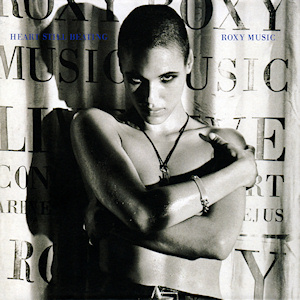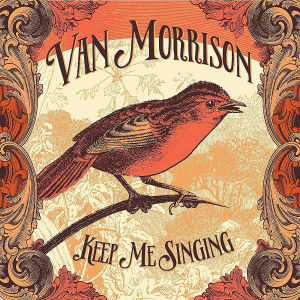The Artist Formerly Known As Prince continued his quest to create on his own terms, first releasing “The Most Beautiful Girl In The World” as a standalone single on the tiny Bellmark label, credited to the unpronounceable symbol he insisted was his legal name. At the same time, he was becoming very immersed in the potential of the Internet, hoping to use it as a method to distribute his music outside of the established record industry.
Virtual reality—and its limitations—was also a big thing in those days, and thus The Gold Experience was presented not so much as a concept album, but as a continuous guided program. Various “NPG Operator” segues throughout the album serve to narrate the journey, sometimes bafflingly, through the different “experiences”.
After a long intro that makes you think your disc is stuck, the irresistible beat of “P. Control” takes over, and despite his ineffectiveness as a rapper, plus the cursing and repeated female anatomy part initialed in the title, the high vocals and goofy sound effects win. “Endorphin Machine” is a furious rocker with terrific guitars, the likes of which had been missing from most Prince albums of late, culminating in one of his classic Revolution-era screams. After we’re informed in Spanish that “Prince está muerto,” somebody’s moaning punctuates the slammin’ intro to “Shhh”, a tune originally given to young protégé Tevin Campbell and taken back to become a ‘90s slow jam. “We March” purports to be something of a call for unity, but there’s an undercurrent of violence in the lyrics and sound effects. “The Most Beautiful Girl In The World” comes next, a year and a half after its appearance as a single. It’s a sweet song, if a little syrupy, and has gone in and out of availability due to being the object of a plagiarism lawsuit, which he lost. “Dolphin” is almost psychedelic rock, a better track than the lyrics.
While it’s specifically set up by the NPG Operator as a jam worthy of “Housequake” and “Sexy MF”, “Now” is simply not as fun as even the latter; frankly, Digital Underground did it better. Similarly, the crunchy guitars on “319” make the song seem like a copy of Tone Loc’s “Wild Thing”, but the minimalist funk of the completely solo “Shy” provides another welcome tangent, despite the dire lyrics. “Billy Jack Bitch” features a repeated sample from the first Fishbone EP, ten years earlier, while the synth hook comes right out of Controversy. The lengthy courtroom rant “Eye Hate U” has promise, but it’s hard to take a womanizer’s broken heart seriously, and especially when he threatens violence. Still, there’s a terrific solo. After the VR program seems to melt down, we find we’ve been granted access to the final tier, in the form of “Gold”. Besides being the longest track on the album, it seems to be set up as not only a finale but a grand anthem. Even the guitar solo seems to recall “Purple Rain”. The operator reappears briefly to confirm the listener’s membership in the New Power Generation and once again welcome said listener “2 the dawn.”
Albums tended to run over an hour in those days, so it’s not fair to dismiss The Gold Experience for being too long for its own good. Stylistically it’s all over the place, offering echoes of all the music he’d created to date. In other words, it’s got something for everybody.
Footnote: As part of the promotional lead-up, a mixtape called
The Versace Experience–Prelude 2 Gold was distributed during that year’s fashion week. Several exclusive edits of songs from
The Gold Experience appear alongside tracks by New Power Generation (allegedly as their own entity but still driven by The Artist Himself), songs from the still-unreleased third Madhouse album, and a preview of the
Kamasutra ballet. After years racking up high prices on the collector’s market, it was made available for Record Store Day 2019, then as a CD for general release.
o|+> The Gold Experience (1995)—3
o|+> The Versace Experience–Prelude 2 Gold (2019)—3
 Roxy Music’s tour supporting Avalon was commemorated two ways: a videocassette chronicling a show in France, and a four-song EP (or mini-album, as they called them in the U.S. in the early ‘80s) recorded live in Glasgow, both titled The High Road. The timing was smart, as they coincided with the American leg of the tour.
Roxy Music’s tour supporting Avalon was commemorated two ways: a videocassette chronicling a show in France, and a four-song EP (or mini-album, as they called them in the U.S. in the early ‘80s) recorded live in Glasgow, both titled The High Road. The timing was smart, as they coincided with the American leg of the tour. That was the last anybody heard of Roxy Music as an entity for seven years, when Heart Still Beating was released with a minimum of fanfare. While the liner notes state that it was recorded in France in 1982, experts have reported that it does indeed include the four tracks from The High Road throughout the sequence, which also does not emulate an actual setlist, nor replicate a complete show, running only 67 minutes.
That was the last anybody heard of Roxy Music as an entity for seven years, when Heart Still Beating was released with a minimum of fanfare. While the liner notes state that it was recorded in France in 1982, experts have reported that it does indeed include the four tracks from The High Road throughout the sequence, which also does not emulate an actual setlist, nor replicate a complete show, running only 67 minutes.





